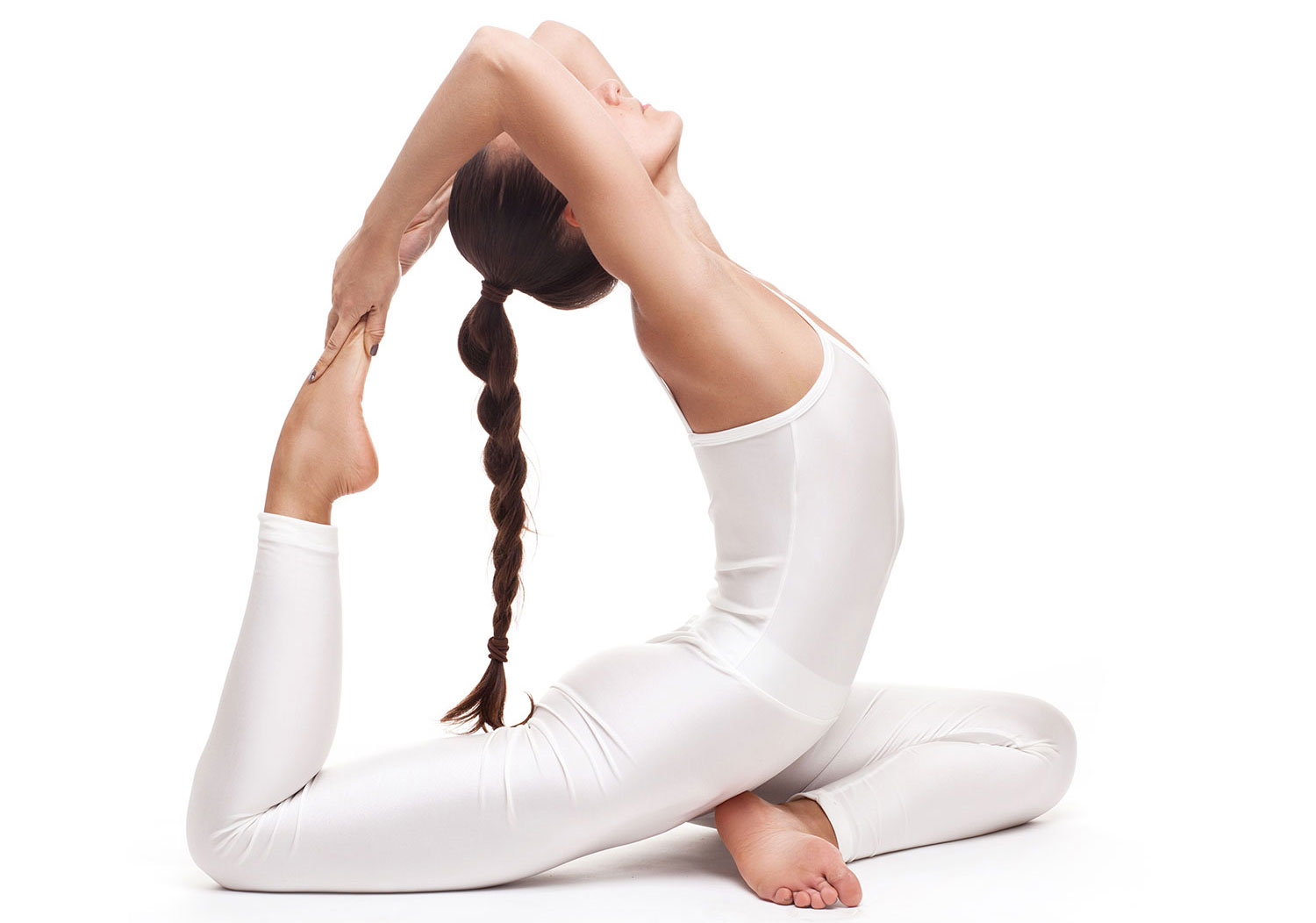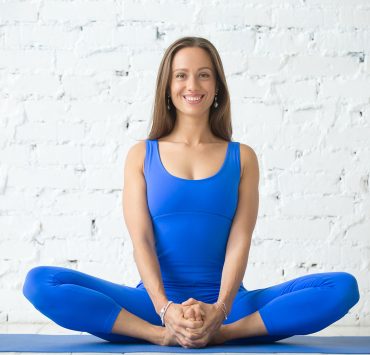
Having been a teacher’s assistant at over 50 yoga teacher…
These days the average person is inundated by distractions and stressful situations. Whether you have a demanding job, long commute to work, or looming student loans, it’s likely you feel the effects of chronic stress if you live in the West.
Thankfully, yoga is a wonderful tool for mitigating stress and getting to the root of lifestyle choices that make stress worse. One of the best forms of yoga for stress is restorative yoga. This type of yoga, developed by B.K.S. Iyengar and made popular by his student Judith Lasater, add to your energy rather than taking away from it like other forms of exercise.
Just to prove how beneficial restorative yoga really is, consider these 15 reasons why you should practice restorative yoga.
Weight Loss

Restorative yoga has actually been proven to help people lose significant amounts of weight, even though there is not any calorie expenditure. The truth is there are a lot of factors that can cause one to gain weight. Practicing restorative yoga balances your hormones, dramatically reduces cortisol in your body, and can help you get in touch with the underlying reasons for weight gain. The National Institute of Health performed the study and brought some amazing claims to light. In the study, researched followed two groups of people who needed to lose weight. One group did basic gym stretches and the other did restorative yoga. The group that did restorative yoga lost more than 2.5 times more belly fat!
Enhanced Flexibility

Another wonderful benefit of restorative yoga is that it helps you gain flexibility in a holistic way. Instead of forcing yourself into uncomfortable poses and risking injury, you can gently elongate your muscles using the help of props.
The idea of restorative yoga is to promote deep relaxation while holding the poses for longer periods of time, with the help of props. Ekhart Yoga
If you are interested in restorative yoga, either seek out a studio that offers it or invest in some basic props like a strap, bolster, blankets, and blocks. These will go a long way in helping you gain flexibility and really get the benefits of restorative yoga.
Calming the Mind

Do you suffer from headaches? Often find yourself over-thinking things or ruminating? Then you will love the sense of mental calmness that comes from restorative yoga. Restorative yoga is usually practiced with the eyes closed and a lightweight rice pillow over the eyes. This is mentally cooling and the weight really helps if you get headaches. When practicing restorative yoga, you will feel the energy draw down from your mind all the way to your feet. This is a grounding practice that can help you quiet relentless thoughts and prepare you for deeper meditation. If you struggling with quieting your mind, restorative yoga can usually do the trick.
Boost the Immune System

Every person has two nervous system channels: the parasympathetic (rest and digest) and sympathetic (fight or flight) nervous system. Practicing restorative yoga helps you switch into your parasympathetic nervous system. Your body can only heal when it is in the parasympathetic nervous system; you will not fight off disease or digest food as effectively if you are under stress. Practicing restorative yoga allows your body to switch into this immune boosting mode, and the effects continue even after you get off the mat. Additionally, restorative yoga stimulates the lymphatic system, which flushes toxins out of the body and floods vital organs with oxygen. You know what hates oxygen? Cancer cells!
Increase Vagal Tone

Have you ever met someone who seems calm all of the time and just lets stress roll off his or her back? People like this often have a naturally high vagal tone. The vagus nerve goes from the base of the skull all the way down the spine, connecting to every vital organ like the stomach, lungs, and heart. When this nerve has healthy tone, you are able to control your reactions during stressful times. Practicing yoga, especially restorative yoga, can dramatically increase your vagal tone for life. This means the more you practice, the more easily you will be able to make it through the inevitable stressors of life without feeling the negative effects as badly.
Increase Breathing Capacity
Many restorative backbends and side bends are done over the support of a bolster. These stretches elongate the intercostal muscles, which are around and between the ribcage. When you stretch these muscles, you will increase your breathing capacity and the effects will last long after you leave the mat. Aside from the anatomical benefits, restorative yoga also kicks your body into it’s rest and digest nervous system. This allows you to take deeper breaths, instead of the shallow ones that come from the fight or flight response.
Find Out Where You Hold Stress In Your Body

When you still your mind and drape your body around a supportive bolster, it will be hard to ignore any areas of the body that tense up or instantly decompress. When you tune in to your body through restorative yoga, you might notice that you hold stress in your back or shoulders. Once you know you hold stress in your shoulders, you’ll recognize tense situations sooner. For example, let’s say the next time you are watching the news, you find your upper back starts to hurt. You might realize the news is a source of unnecessary stress and turn it off. Over time, decisions like that can dramatically reduce your stress levels.
Release Stored Emotions
Trauma is an inevitable part of life. No matter who you are, you have trauma – even if you have had a perfect life, the very act of being born can cause you to carry birth trauma into your adult life.
Trauma is an inevitable part of life. No matter who you are, you have trauma – even if you have had a perfect life, the very act of being born can cause you to carry birth trauma into your adult life. Birth trauma expert, Suzanne Swan
One way to release this stress is by practicing restorative yoga. When you practice restorative yoga and get deep into the trance-like state of conscious rest, you might feel waves of emotions like fear, anger, sadness, and you may even cry. If this happens during your practice, just let the feeling come out naturally and feel free to ask the teacher for support. Most restorative yoga teachers are familiar with this reaction to restorative practices.
Slow Down The Pace of Life

Even if you are not dealing with a lot of stress in life, why not take the time to slow things down and give yourself a little treat? Restorative yoga can help you remember that there is no reason to rush anywhere! Life is all about the journey, and having a nice, slow practice is a wonderful reminder of that. Plus, the next time you have to wait in line or get put on hold, you can slip into a restorative yoga mindset and take that time to rest and renew.
Soothes The Nervous System

As mentioned before, restorative yoga helps you switch from the sympathetic nervous system to the parasympathetic nervous system. When this happens, you will feel more grounded and experience deeper, fuller breathing. This is a neurological response that helps signal to your body that it is safe to stop producing stress hormones and instead take the time to digest food and relax.
Develops More Body Awareness

Unlike other forms of yoga, restorative yoga is practiced with the eyes closed. This prevents you from comparing yourself to the teacher or other students, and turns your attention inward. These qualities are especially helpful for people who suffer from eating disorders, as it can put you in touch with the way your body feels instead of the way it looks. It is also helpful for people who have a tendency to push themselves; restorative yoga is not about “nailing” the pose rather than feeling the benefits.
Helps You Feel Safe & Nurtured

The props in restorative yoga are very underrated. Many beginning students avoid yoga props because they think they are only for those who are weaker. The truth is, yoga props will help you feel the benefits of restorative poses more deeply. They can also make you feel very safe and nurtured. When practicing restorative yoga, treat yourself by lavishing your body in blankets and eye pillows. One tip is to always cover your yoga mat with a really soft blanket. It will be the most cozy and peaceful savasana of your life!
Helps You Consciously Relax

The main benefit to restorative yoga is that it helps you learn how to control your mind. Over time, you will notice how easy it is to slip into restorative poses. This is actually an advanced yoga skill. According to this article from Yoga Journal:
Restorative yoga uses long-held, supported resting poses to create the conditions for us to cultivate the skill of conscious relaxation and most importantly to release unnecessary habitual tension in the body and mind. It’s a little bit closer to a meditation practice than a movement practice—it’s a way of practicing “meditation” as a somatic, embodied experience. Restorative Yoga teacher, Jillian Pransky.
It Can Be Practiced Anytime, Anywhere

Even though restorative yoga is best when practiced with lots of props, you can actually practice it when you’re just sitting in a chair. That means if you enter into a stressful situation at work, you can close the door to your office (or find a private bench outside or sit in your car) and practice Judith Lasater’s seated relaxation pose. To practice the pose, ground both feet on the floor. Feel your spine lift naturally yet long from the base of your body. Place your palms face up on your lap. Close your eyes and take several deep breaths. Focus on your breath and let the stress of the situation melt away.
Improves Your Ability to Heal & Recover From Injury

One of the final benefits of restorative yoga is that it is so modular. If you are recovering from an injury, restorative yoga will help a lot. First of all, it will put your nervous system into healing mode. Second, it will add to your energy rather than taking away from it. Third, it will allow you to regain mobility by easing you into poses with the help of yoga props and the slow pace will allow you to be more careful, no matter what kind of injury you are dealing with.
What's Your Reaction?
Having been a teacher’s assistant at over 50 yoga teacher trainings worldwide, Rebecca Rebecca has a firm grasp on the fine art of yoga and meditation. In her work, she carefully reflects on a vast expanse of knowledge to help others find peace in both body and mind.














